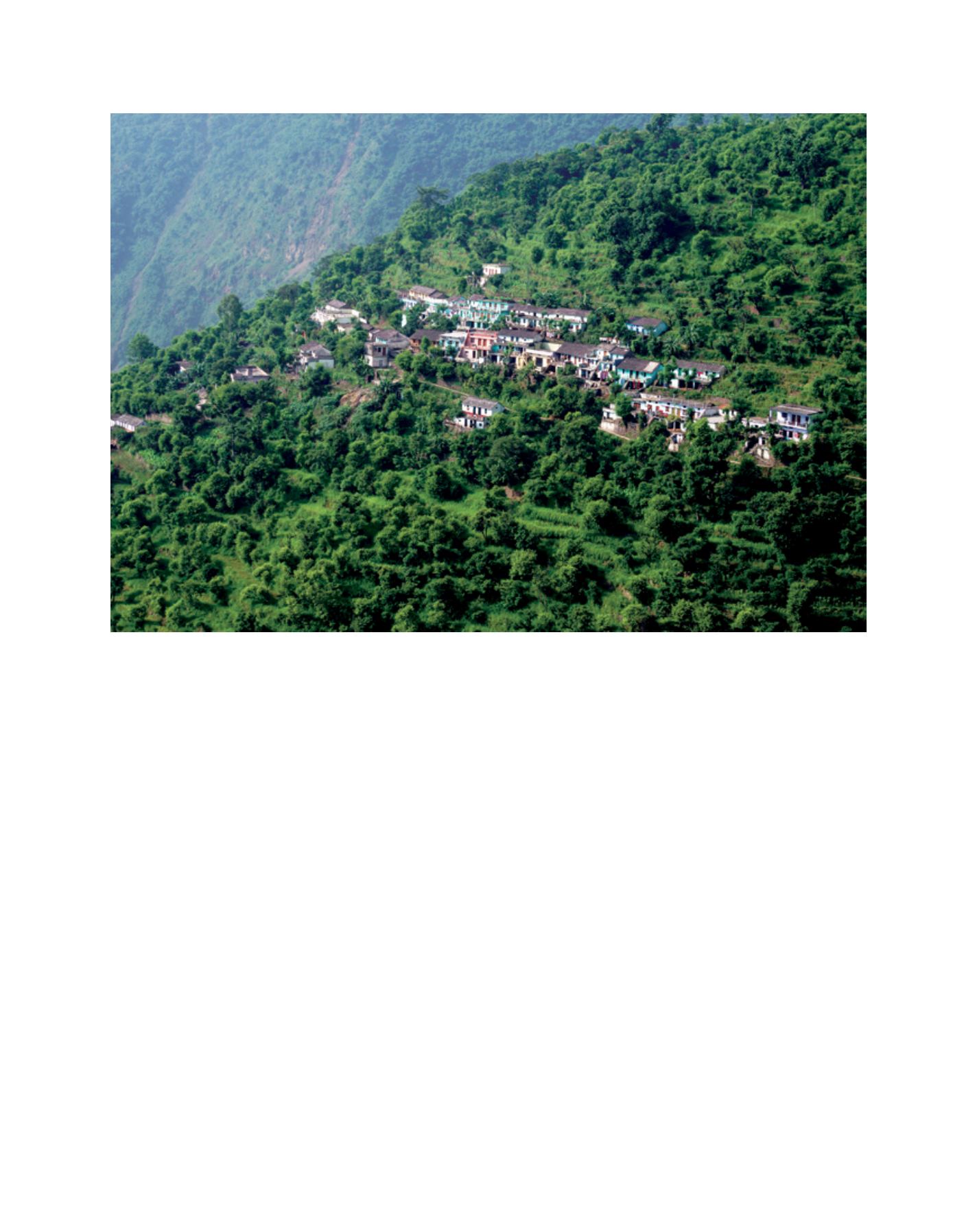

[
] 80
and porcupines in the mountains. This loss has become
so intense that in some places the community has either
left farming or grown forest trees on their piece of land.
The age-old practice of biofencing, which was designed to
protect against wild animals, has been lost in the course of
time. Biofencing used different types of shrubs which had
qualities to prevent intrusion into farm land. Biofencing
served multiple purposes in villages – as well as providing
fencing, the shrubs produced various fruits, or had medici-
nal and fuel values.
Himalaya represents a true family farming model, through
the collective efforts of community where families help and
seek support from one another. There is an arrangement
for material, labour and the sharing of produce. Landless
farmers and artisans also help farmers as payment for
grains. Family farming here is a multi-stakeholder affair,
where all community members work collectively but main-
tain individuality too.
Mountain agriculture cannot be treated in isolation.
Various factors contribute to growth here. Agriculture is
not possible without the forest, as various inputs come
from there. Cultivated land is a deposition of soil that
comes with rainwater from the forested top of the moun-
tain. Local cattle play their role in ploughing, threshing and
other purposes, and these animals depend largely on the
forest for fodder. Forest litter also becomes a major source
of compost for the family farm. The litter is spread as a bed
under cattle and, when mixed with their waste, helps to
prepare the manure.
In the past, the nutritional needs of the mountain commu-
nity were met by traditional family farming. The nature
of local crops is such that it matches the local commu-
nity’s physiological needs. Millets were major crops in the
mountains, and these served all basic bodily needs. For
example, in high altitude areas, buckwheat protects against
solar radiation hazards because it contains a compound
called rutin. There are several such relationships between
climatic produce and local human needs, and this age-old
nutritional dependence is peculiar to Himalaya.
Millets were the staple diet, with other elements coming
from cereals, vegetables and fruits. One special contribu-
tion used to come from wild fruits and vegetables, serving
the requirement for micronutrients and essential elements.
There was a striking sustainability between human needs
and the region’s climatic regime. This sustainability broke
as we advanced in status and knowledge. Paddy and wheat
were assumed to be elite class food, and that discouraged
millet consumption at village level too. Besides, the Indian
Forest Act prevented communities from having access to
forest the resources they contain. The third factor that
ruptured the local farmers’ relationship was market inva-
sion. Community dependence on the market began to
Himalaya represents a true family farming model in which communities work together and families support one another
Image: HESCO
D
eep
R
oots
















